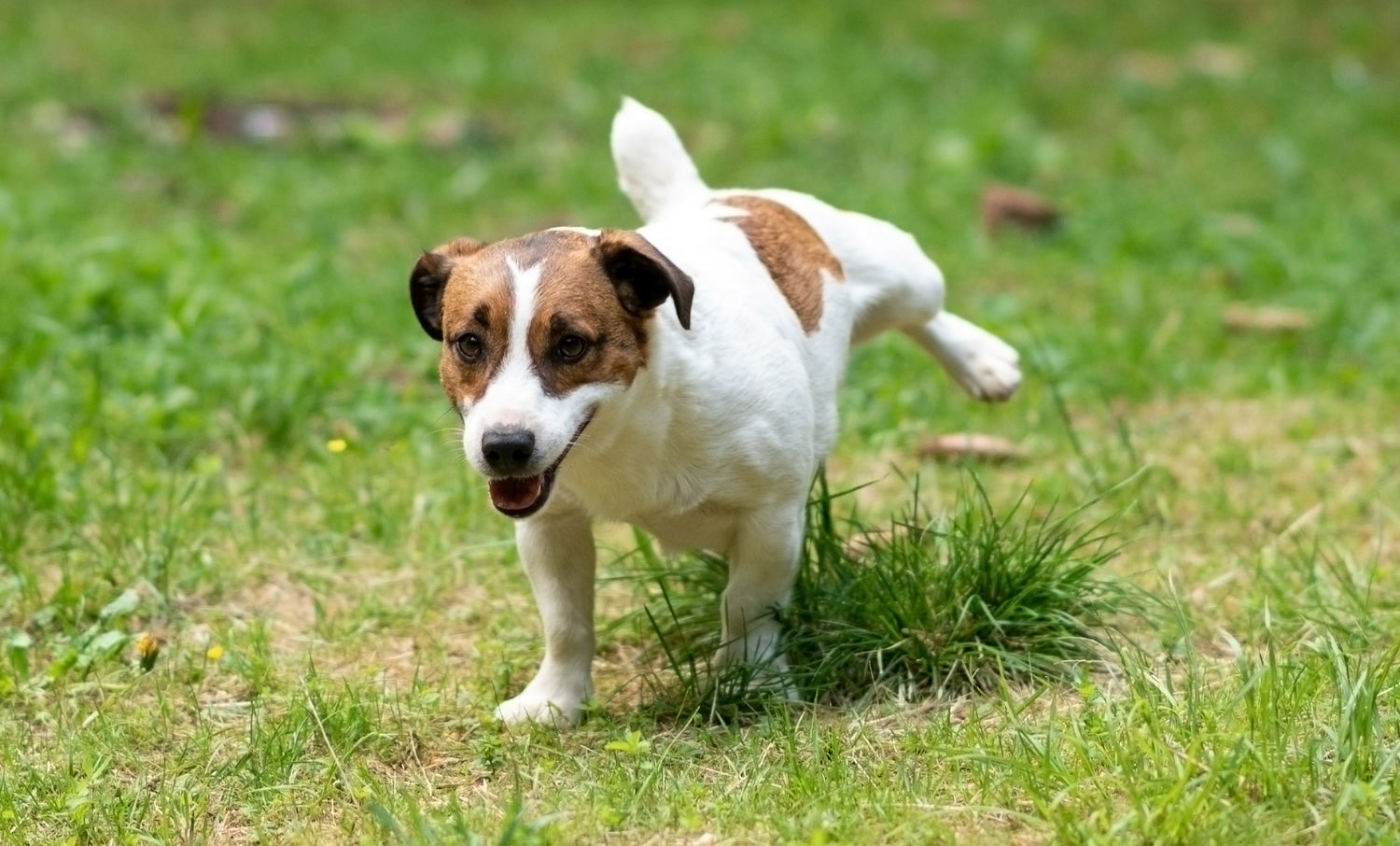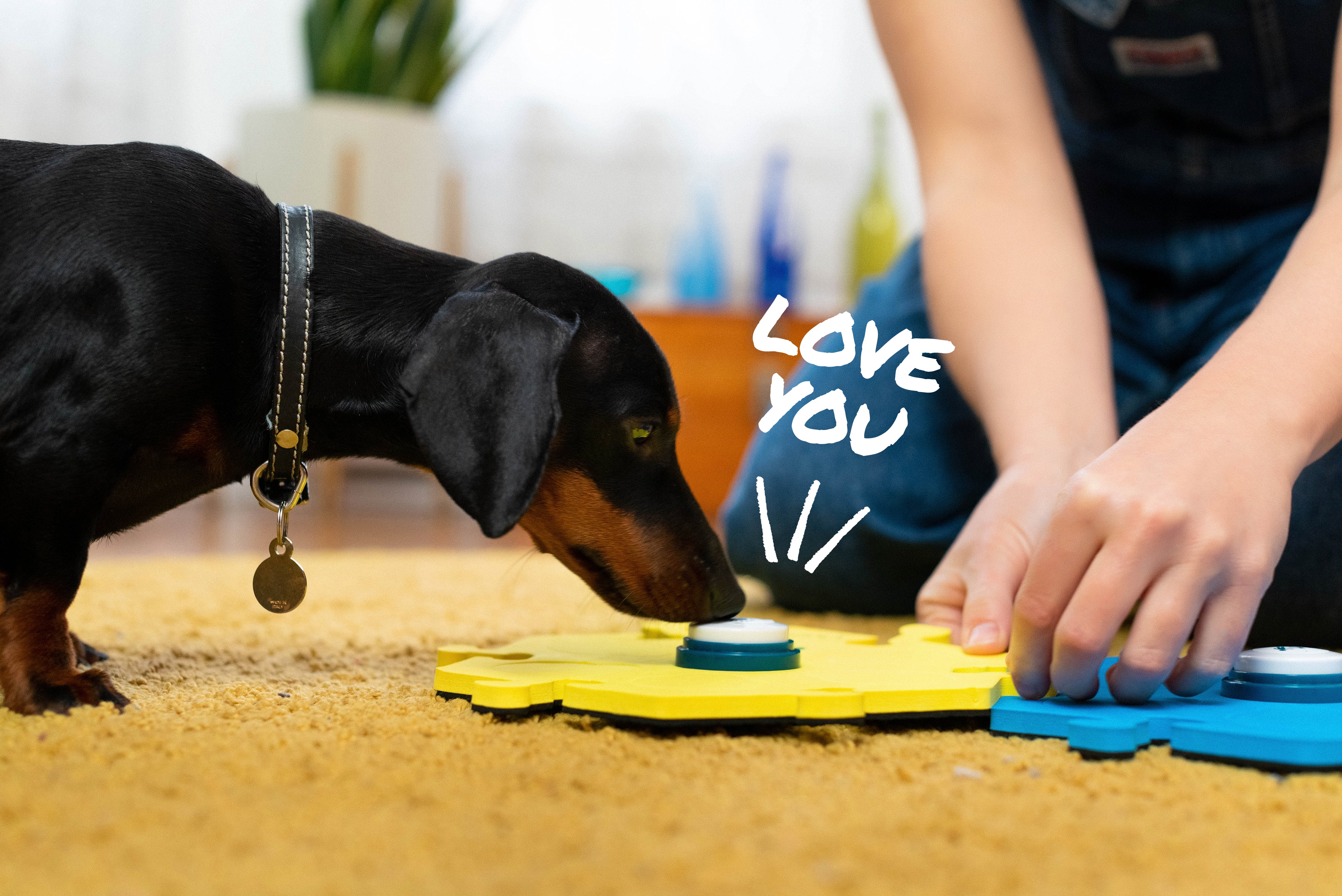Puppies offer unlimited love and faithful companionship. However, if left untrained, they will also go about their business when and where they want, leaving you with unpleasant "gifts" to clean up. There are a few things less annoying than stepping into your puppy's "gift" on your way to the bathroom in the middle of the night. House-training your puppy is essential if you want to avoid unpleasant and awkward situations. Here are a few training tips on how to train your dog to pee outside.
Establish a Routine

Puppies love being worked with and thrive on routine schedules. They learn from those schedules that there are set times for eating, playing, and potty breaks — or going to their potty spot, either inside or outside.
As a general rule, puppy bladder control lasts one hour for every month of age; young puppies can hold it for roughly two hours if they're two months old. If you wait much longer between bathroom breaks, your new puppy is likely to have an accident, which also implies clean-up duty.
Luckily, with just a few steps and lots of positive reinforcement, this can be avoided. Here's what you should focus on to potty train your puppy:
Set Regular Potty Breaks

Take your puppy outside to their potty area frequently, at least every two hours, depending on their age, to establish a routine and potty time. In addition, you should also take them out immediately after they wake up, after eating or drinking, and even during and after playtime, just to avoid potential mishaps.
Pick a Potty Area OutsideChoose a potty spot outside where your dog can relieve itself, and take your dog to that place every time while on a leash. While your puppy is eliminating, use a specific word or phrase like "Go potty!" This is especially important during puppy training, as it reminds them of what they're doing while they're doing it and helps them associate action with the phrase.
Reinforce good behavior
One of the most effective ways to teach your puppy “good” behavior is through positive reinforcement. But what exactly is positive reinforcement? How does it differ from negative reinforcement, or even positive punishment? Let’s break down these terms by first introducing the well-known American behaviorist B.F. Skinner.

In the early 20th century, Skinner discovered “operant conditioning,” or a method of learning that rewards or punishes behavior. Operant conditioning helps the brain make connections between an action and a direct consequence. Most of the time, actions followed by “good” consequences are more likely to be repeated.
In the world of behaviorism, “reinforcement” refers to any action that increases the likelihood of a behavior. “Punishment” refers to any action that decreases the likelihood of said behavior. In this context, positive and negative have nothing to do with “good” or “bad”—positive simply means “adding” while negative means “taking away.”
So, positive reinforcement is adding something (like a treat) to encourage your pup to go out to pee. You’re encouraging them to increase a desirable behavior by “adding” a reward! Negative reinforcement is removing something (like the annoying tension of a leash) whenever your pup walks closer to your heel. This teaches your pup to increase the behavior of walking close to you. On the other hand, positive punishment would be scolding your pup to stop them from pottying in the house, and negative punishment would be taking away a treat or a toy when your pup is misbehaving.
Now that you know the difference, which technique is best for potty training? Hint: it involves rewarding your puppy!
Praise the PuppyToday, psychologists and behavioral experts generally agree that reinforcement is more effective than punishment. Paying attention to and rewarding good behavior is not only encouraging, but also more fun for everyone involved.
Positive reinforcement, praises, and rewards are essential to successful potty and house training. Reward your puppy each time it eliminates at an appropriate spot outside. This should be done regardless of whether you brought the puppy out or it signaled that it wants out. Either way, you're reinforcing a positive habit, and praises and treats should be given. That way, the puppy will associate good behavior with getting something that smells and tastes delicious.
Control Your Puppy's DietWhat goes into the puppy will inevitably come out the other end. Puppies have immature digestive tracts, so they can't really handle large quantities of food. For that reason, it's highly recommended that you formulate their feeding schedule into three smaller meals, manageable for their digestive systems.
Keep an Eye On Your Dog to Prevent Indoor Accidents
Depending on the circumstances, your puppy might have an accident inside your home and soil your carpet or a rug. If such things happen, it's vital that you don't overreact. It's all a normal part of the potty-training process. However, to prevent that from happening, you should supervise your puppy.
If you notice your puppy becoming restless, sniffing around the floor, or squatting, get them out immediately. But if you noticed too late and caught them in the act – it's best to interrupt them. Make a shocking noise, or say "OUTSIDE!" with a firm and authoritative voice, and immediately take them to their "go potty" spot outside.
Crates for Potty TrainingIf you can't supervise your puppy at all times, restrict them to the area small enough in which they won't eliminate, like the dog crate — which may require some crate training. Additionally, you might want to consider training your puppy to eliminate on potty pads. The process is similar to basic house training, but the potty spot is the pee pad itself, not an outside bathroom spot.
Essential Items When Teaching Your Dog to Pee Outside
There are some items that are a must when house training a dog, and some of these are even used by professional dog trainers.
Pee PadsPee pads are a necessity during puppy potty training, especially if you're in a position in which you have to confine your puppy. These moisture-absorbing pads are similar to a baby's diapers. However, unlike the diapers, the pads are spread on the floor, acting as the potty area.
Floor CleanersAccidents will happen, and when they do, it's important that you thoroughly clean the affected area and remove any smells that might prompt your dog into believing that it's their potty spot. Enzymatic cleaners are great for removing any smells that result from an indoor accident.
Baby GatesIf you don't have a dog crate and you're without an option to purchase one, baby gates are a fantastic alternative. They're not as sturdy as dog gates, but they can be used to dog-proof certain areas of your home, like laundry or mudrooms.
FluentPet Sound ButtonsFluentPet Sound buttons are a fantastic tool that allows you to communicate with your dog, or more specifically, they allow your dog to express itself using simple phrases, like "play" and "outside." In fact, with "outside" being one of the most popular buttons among dogs and cats, our FluentPet community has found buttons to be a great way to both begin teaching their dog or cat to talk and give them a way to let you know when they need to "go".
Given enough buttons and adequate training, your dog will be able to communicate almost everything. It’s never too early to start training and going potty is a great first button for your pup.
If you're not sure whether Sound Buttons are for your dog, you can order a Tester Kit, composed of two FluentPet Sound Buttons and two HexTiles, and see if these buttons are right for your learner.
How Long Does It Take to Train a Dog to Pee Outside?

Potty training requires a lot of patience, consistency, and commitment. Puppies and adult dogs are just like human babies – they're at their best when they're on a regular schedule. And with proper training, most puppies and adult dogs will adopt their training schedule within four to six months.
However, it's important to remember that potty training is a process, not a one-time lesson. Mishaps will happen, so it's essential to know that punishment often provides less-desirable results.
If an accident happens to an adult or older dog, please consider the possibility of your dog having a medical issue, like a urinary tract infection or just simple separation anxiety, which leads them to pee and poop in your absence.
Summary
It may take anywhere from four to six months to house train a puppy or an adult dog and teach them to ask to go outside and do their thing. However, if you want to take your dog training one step further, we suggest you invest in Sound Buttons and get your dog to pee outside all of the time with FluentPet.





Leave a comment
This site is protected by hCaptcha and the hCaptcha Privacy Policy and Terms of Service apply.